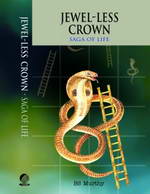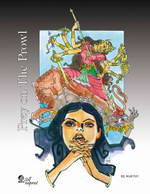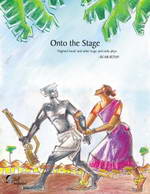|
Books Should Be Free Loyal Books Free Public Domain Audiobooks & eBook Downloads |
|
|
Books Should Be Free Loyal Books Free Public Domain Audiobooks & eBook Downloads |
|
Romance Novels |
|---|
|
Book type:
Sort by:
View by:
|
By: Myrtle Reed (1874-1911) | |
|---|---|
 A Spinner in the Sun (dramatic reading)
A Spinner in the Sun (dramatic reading)
Myrtle Reed may always be depended upon to write a story in which poetry, charm, tenderness and humor are combined into a clever and entertaining book. Her characters are delightful and she always displays a quaint humor of expression and a quiet feeling of pathos which give a touch of active realism to all her writings. In "A Spinner in the Sun" she tells an old-fashioned love story, of a veiled lady who lives in solitude and whose features her neighbors have never seen. There is a mystery at the heart of the book that throws over it the glamour of romance. | |
By: Amanda McKittrick Ros (1860-1939) | |
|---|---|
 Irene Iddesleigh
Irene Iddesleigh
Amanda McKittrick Ros, a Northern Irish writer, did for the novel what William McGonagall did for poetry and Florence Foster Jenkins for the coloratura voice. She published a number of novels (all at her own expense) and in addition to being a novelist was a poet, her best known being 'Visiting Westminster Abbey' which beginsHoly Moses!Take a look!Flesh decayed in every nook!Some rare bits of brain lie here,Mortal loads of beef and beer.C.S. Lewis, J.R. Tolkien and The Inklings were admirers and held competitions to see who could read her work for the longest time whist keeping a straight face... | |
By: William John Locke (1863-1930) | |
|---|---|
 The Fortunate Youth
The Fortunate Youth
Paul is a poor boy who grew up in London, in the household of his mother and stepfather. His journey to greatness is the subject of our story. But his desired success comes at a very high price. | |
By: George Eggleston and Dolores Marbourg | |
|---|---|
 Juggernaut: A Veiled Record
Juggernaut: A Veiled Record
Edgar Braine was consistently successful at all he set out to accomplish. He went through life with goals and worked diligently and with ethical purity in reaching those goals, from becoming editor of the local newspaper on up to his political aspirations. That was how his mother, in her waning years, had advised him to reach his goals, and Edgar was determined to honor her advice. There was one caveat in his mothers advice however, and it is for Edgar to determine exactly what she meant by it. Is success measured by the interactions between business, politics, and marriage? | |
By: Charles Major (1856-1913) | |
|---|---|
 When Knighthood Was in Flower
When Knighthood Was in Flower
Set during the Tudor period of English history, When Knighthood Was in Flower tells the tribulations of Mary Tudor, a younger sister of Henry VIII of England who has fallen in love with a commoner. However, for political reasons, King Henry has arranged for her to wed King Louis XII of France and demands his sister put the House of Tudor first, threatening, "You will marry France and I will give you a wedding present – Charles Brandon's head!" | |
By: Anonymous | |
|---|---|
 The High History of the Holy Graal
The High History of the Holy Graal
| |
By: Unknown (ca. 1100-1175) | |
|---|---|
 Arthurian Chronicles: Roman de Brut
Arthurian Chronicles: Roman de Brut
| |
 The Life and Death of Cormac the Skald
The Life and Death of Cormac the Skald
| |
By: BS Murthy | |
|---|---|
 Benign Flame: Saga of Love
Benign Flame: Saga of Love
The attractions Roopa experienced and the fantasies she entertained as a teen shaped a male imagery that ensconced her subconscious. Insensibly, confident carriage came to be associated with the image of maleness in her mind-set. Her acute consciousness of masculinity only increased her vulnerability to it, making her womanliness crave for the maleness for its gratification. However, as her father was constrained to help her in becoming a doctor, she opts to marry, hoping that Sathyam might serve her cause though the persona she envisioned as masculine, she found lacking in him... | |
 Crossing the Mirage - Passing through Youth
Crossing the Mirage - Passing through Youth
If passing through youth was like crossing the mirage of life for Chandra and Nithya, it proved to be chasing the mirage of love for Sathya and Prema though for plain Vasavi, Chandra's pitiable sibling, it was the end of the road. As life brings Chandra, who suffers from an inferiority complex for his perceived ugliness, and Nithya, who was bogged down being jilted by Vasu, together, they script their fate of fulfillment. And as poetic justice would have it, Sathya, who caused Prema's heart burn, himself was led down the garden path by Kala, doing a "Sathya on Sathya"... | |
 Jewel-less Crown: Saga of Life
Jewel-less Crown: Saga of Life
This fascinating saga of life exemplifies the material raise and moral fall of Gautam and Sneha and also the poignant end of the latter and the spiritual rise of the former that is after the fall. Besides, this piquant story depicts the tragic life of their son Suresh Prabhu and his eventual redemption through love for and of Vidya. Book One, Artha and Kama, is about conflict and resolution arising out of ambition and achievement, intrigue and betrayal, compulsion and compromise, sleaze and scandal, trial and sentence and regret and remorse spread over eighteen chapters... | |
 Prey on the Prowl - A Crime Novel
Prey on the Prowl - A Crime Novel
Who could have poisoned Ranjit the realtor, Shakeel the Inspector, Pravar the criminal and Natya his accomplice? Well the needle of suspicion tilted towards Pravar that was till he perished with his mate, but then who was the one? Could it be Radha under the scanner for her role in the death of her husband Madhu and his mistress Mala, Pravar's sister? Or was it Ranjit's spouse Kavya, who owing to Stockholm Syndrome, takes to Pravar her kidnapper. As these deaths by poisoning puzzle Dhruva, Radha, who worms her way into his life, avers that Kavya had the motive and the means to kill her spouse, her paramour and his wife besides the cop... | |
 Onto the Stage - Slighted Souls and other stage and radio plays
Onto the Stage - Slighted Souls and other stage and radio plays
Voice Over: Under the British Raj in India, the self-indulging Nizams of Hyderabad abdicated the administration of their vast principality to doralu, the village heads, letting them turn the areas under their domain into their personal fiefdoms. While the successive Nizams were obsessed with building palaces and acquiring jewelry, the village heads succeeded in ushering in an oppressive era of tyrannical order. Acting as loose cannon from their palatial houses called gadis, the doralu succeeded in foisting an inimical feudal order upon the downtrodden dalits... | |
By: Alessandro Manzoni (1785-1873) | |
|---|---|
 Betrothed (I Promessi Sposi)
Betrothed (I Promessi Sposi)
The Betrothed (I Promessi Sposi) presents a kaleidoscope of individual stories, which are all tied together by the story of Lucia and Renzo, two young persons of humble origin that are deeply in love with one another. However, despite their great attachment, they are prevented from marrying by the cruel Don Rodrigo, who has himself cast an eye on the beautiful and pious Lucia. Don Rodrigo menaces the priest who was to perform the wedding ceremony, who then refuses to do his duty. Thus threatened and prevented from being married, the couple is separated, and the narration follows each of them on their struggle to unite again... | |
By: John Jeffery Farnol (1878-1952) | |
|---|---|
 Broad Highway
Broad Highway
Our hero, Peter Vibart, an Oxford graduate with no means of support but for 10 guineas he has inherited, sets out on a walking tour of the Kent countryside. Along the way, he meets many quaint and adoring characters as well as a few ne’er-do-wells, meets with several disasters and triumphs, and eventually he meets "The Woman," who leads him to even more disasters and triumphs. (Introduction by John Lieder)Proof-listened by Dawn Larsen and BainbridgeCatherine. | |
By: George Eliot (1819-1880) | |
|---|---|
 Felix Holt, The Radical
Felix Holt, The Radical
"Harold Transome is a landowner who goes against his family's political tradition (much to his mother's distress), while Felix Holt is a sincere radical. The setting of the book, the 1832 parliament election, is used to discuss the social problems of that time. A secondary plot involves Esther Lyon, the stepdaughter of a minister who is the real heiress to the Transome estate, with whom both Harold Transome and Felix Holt fall in love. Esther loves poor Felix Holt, but would she choose a comfortable life with Harold Transome?" | |
By: George Gascoigne (1535-1577) | |
|---|---|
 Adventures of Master F.J.
Adventures of Master F.J.
This story presents through letters, poems and third-person commentary the love affair between a young man named Freeman Jones and a married woman named Elinor, lady of the castle he is visiting in Scotland. Events in the affair are traced from initial attraction through seduction to (somewhat) graphic sexual encounters and their aftermath. (Allegedly based on a real-life scandal, the author, in re-issuing his story two years later, transplanted the action to Italy, renaming the principals Fernando Jeronimi and Leonora.) | |
By: Mary Elizabeth Braddon (1835-1915) | |
|---|---|
 Vixen
Vixen
This is an exquisite and heartbreaking love story. Violet Tempest and Roderick Vawdrey, otherwise known to each other as Vixen and Rorie, are childhood sweethearts. However, Rorie's family wants him to marry elsewhere. You may think it is the old story all over again, but nothing in this novel is what it seems. It is far too realistic for that. Many books talk about falling in love. This book starts after that stage, and speaks about the harder stage of a relationship: loving earnestly but understanding that love - even in the truest and purest sense - is not everything in life... | |
By: Rosa Campbell Praed (1852-1935) | |
|---|---|
 Rebel Rose
Rebel Rose
The Rebel Rose is the story of Mary Stuart Beaton, a descendant of Mary Queen of Scots who has come to London in the hope of having her family claims legitimized. The Pretendress -- as she is called, finds herself caught up in the devices of her own personal guardians as well as a scheming London society woman scorned by a powerful member of Parliament who has become an admirer of the Princess. Apart from the claims of royalty, Mary Beaton knows where her worth is found and she proves to be a formidable opponent for all those scheming for and against her. | |
By: Benjamin Disraeli (1804-1881) | |
|---|---|
 Sybil, or the Two Nations
Sybil, or the Two Nations
Sybil is one of the most prominent political novels of the mid-nineteenth century, taking as its subject the "condition of England" question. That phrase was first used by Thomas Carlyle in an essay of 1839 on Chartism, a working-class protest movement that plays a prominent role in this novel. The two nations are the rich and the poor, and the increasing gulf between them, and their condition also inspired such writers as Charles Dickens and Mrs. Gaskell, among others (one of whom, Friederich Engels, was the disciple of Karl Marx, and in his The Condition of the Working Class in England in 1844 described the appalling effects of the industrial revolution a year before Sybil appeared)... | |
By: Arthur W. Marchmont (1852-1923) | |
|---|---|
 Dash for a Throne
Dash for a Throne
The young Count von Rudloff got himself into so much trouble with the Imperial Family in Berlin, that he sees no other way out of it than to fake his own death. Stumbling through different identities, he finally assumes - quite against his will - the identity of the Prince von Gramberg. At Gramberg Castle, he finds a web of intrigue, which threatens the safety of the young and beautiful Countess Minna. The Count von Rudloff decides to save the girl, but the intrigue is more complicated than it first appeared, and there are old enemies who are still waiting for their revenge... | |
By: George Bernard Shaw (1856-1950) | |
|---|---|
 Widowers' Houses
Widowers' Houses
This is one of three plays Shaw published as Plays Unpleasant in 1898; they were termed "unpleasant" because they were intended, not to entertain their audiences—as traditional Victorian theatre was expected to—but to raise awareness of social problems and to censure exploitation of the laboring class by the unproductive rich. In this play, Dr. Harry Trench becomes disillusioned when he discovers how his fiancee's father, Mr. Sartorius, makes his money. However, it is soon revealed that Trench's own income is far from untainted. | |
By: Ann Radcliffe (1764-1823) | |
|---|---|
 EDWY: A Poem, in Three Parts
EDWY: A Poem, in Three Parts
In Edwy, Ann Radcliffe gives us a delightful piece of poetic moonshine, whose eponymous hero seeks assistance from the world of faerie in order to spy on his girlfriend, Aura, and see if she really loves him. He does this by venturing unseen into Windsor Forest at night to trap the love-fay, Eda, who, once spellbound, must reveal all and let him remotely view Aura's activities by means of a magic mirror cut from crystal. In addition to this early form of cyberstalking, Edwy, on his night-journey into the forest gets to witness a royal procession of the Fairie Queen, followed by midnight revels of elves and spirits... | |
By: Charlotte Lennox (1730-1804) | |
|---|---|
 Henrietta Volume 1 (dramatic reading)
Henrietta Volume 1 (dramatic reading)
Henrietta is a strong willed young lady who will not give in to her aunt and marry the suitors she proposes. She runs away and adventure ensues. However she meets one young man who she is quite taken with but he does not share all about himself and Henrietta finds herself in some tricky situations. | |
By: Harry Clifford Fulton | |
|---|---|
 Jean Valjean; or, The Shadow of the Law
Jean Valjean; or, The Shadow of the Law
A late 19th-century stage adaptation of Victor Hugo's Les Miserables in English, The Shadow of the Law dramatizes the struggles of Hugo's legendary characters: Jean Valjean, the former convict; his relentless pursuer, Javert; Fantine, the tragic mother; her daughter Cosette; the greedy Thenardiers; the doomed revolutionaries. | |
By: William Shakespeare (1554-1616) | |
|---|---|
 Much Ado About Nothing (version 2)
Much Ado About Nothing (version 2)
Much Ado About Nothing is generally considered one of Shakespeare’s best comedies, because it combines elements of robust hilarity with more serious meditations on honor, shame, and court politics. Much Ado About Nothing chronicles two pairs of lovers: Benedick and Beatrice (the main couple), and Claudio and Hero (the secondary couple). Benedick and Beatrice are engaged in a very "merry war"; they are both very witty and proclaim their disdain of love. In contrast, Claudio and Hero are sweet young people who are rendered practically speechless by their love for one another... | |
By: Edward Phillips Oppenheim (1866-1946) | |
|---|---|
 Yellow House
Yellow House
Vicar and his two daughters move to a small, quiet country village and soon learn that their neighbor in the yellow house holds secrets that will change everything they thought to be real in their lives. | |
By: Oliver Goldsmith (1730-1774) | |
|---|---|
 Good-Natured Man
Good-Natured Man
By the playwright of the more popular She Stoops to Conquer, The Good-Natured Man is the comedic story of misguided philanthropy, mistaken identity, and secret romance. Will Honeywell, The Good-Natured Man, see through the lies and trickery surrounding his generosity? Will Leontine and Olivia's true relationship be found out? And just what is that Lofty guy up to...? | |
By: Louis Couperus (1863-1923) | |
|---|---|
 Inevitable
Inevitable
23 year old Cornélie de Retz is a Dutch Divorcee who goes to Italy to start a new life and most part of the novel is filled with the details of romantic conversations, emotions and finally the Inevitable follows. Find out what the Inevitable is and immerse yourself in the explicit and delicate details of the author as he takes you round the world of Cornélie de Retz. | |
By: Sybil G. Brinton (1874-1928) | |
|---|---|
 Old Friends And New Fancies
Old Friends And New Fancies
Generally acknowledged to be the first sequel to the work of Jane Austen, Old Friends and New Fancies incorporates characters from each of Austen's six major novels into one unified story, as well as those of Brinton's own invention. The novel generally focuses on various parings of lovers and the challenges that their unions create. | |
By: Earl Derr Biggers (1884-1933) | |
|---|---|
 Love Insurance
Love Insurance
A young man came to Lloyds of London. He knew they took out policies on unusual risks... And what he wanted was love insurance. What follows is a comic novel, by the creator of the Chinese detective - Charlie Chan! | |
By: George Bernard Shaw (1856-1950) | |
|---|---|
 Love Among the Artists
Love Among the Artists
Love Among the Artists was published in the United States in 1900 and in England in 1914, but it was written in 1881. In the ambience of chit-chat and frivolity among members of Victorian polite society a youthful Shaw describes his views on the arts, romantic love and the practicalities of matrimony. Dilettantes, he thinks, can love and settle down to marriage, but artists with real genius are too consumed by their work to fit that pattern. The dominant figure in the novel is Owen Jack, a musical genius, somewhat mad and quite bereft of social graces... | |